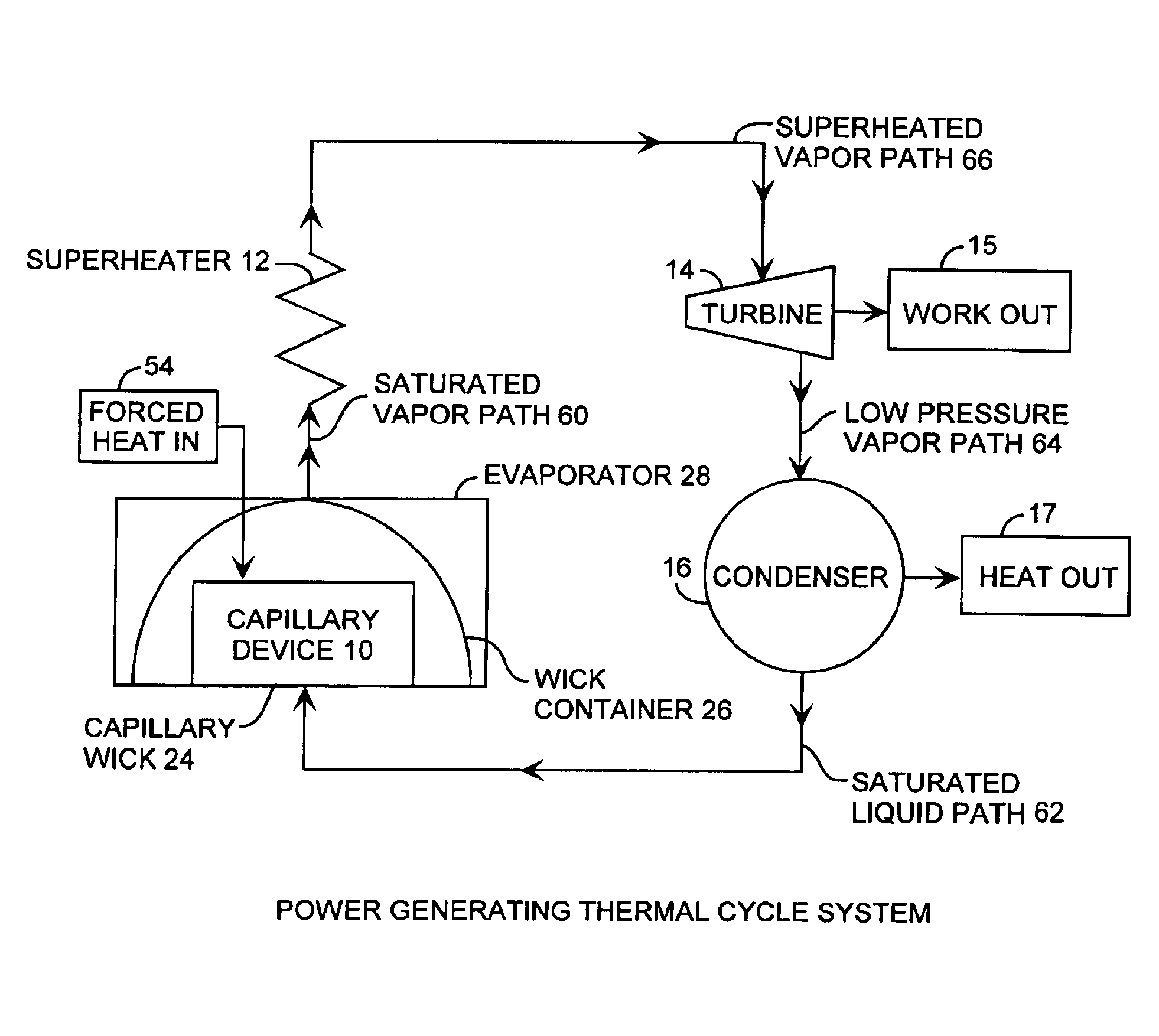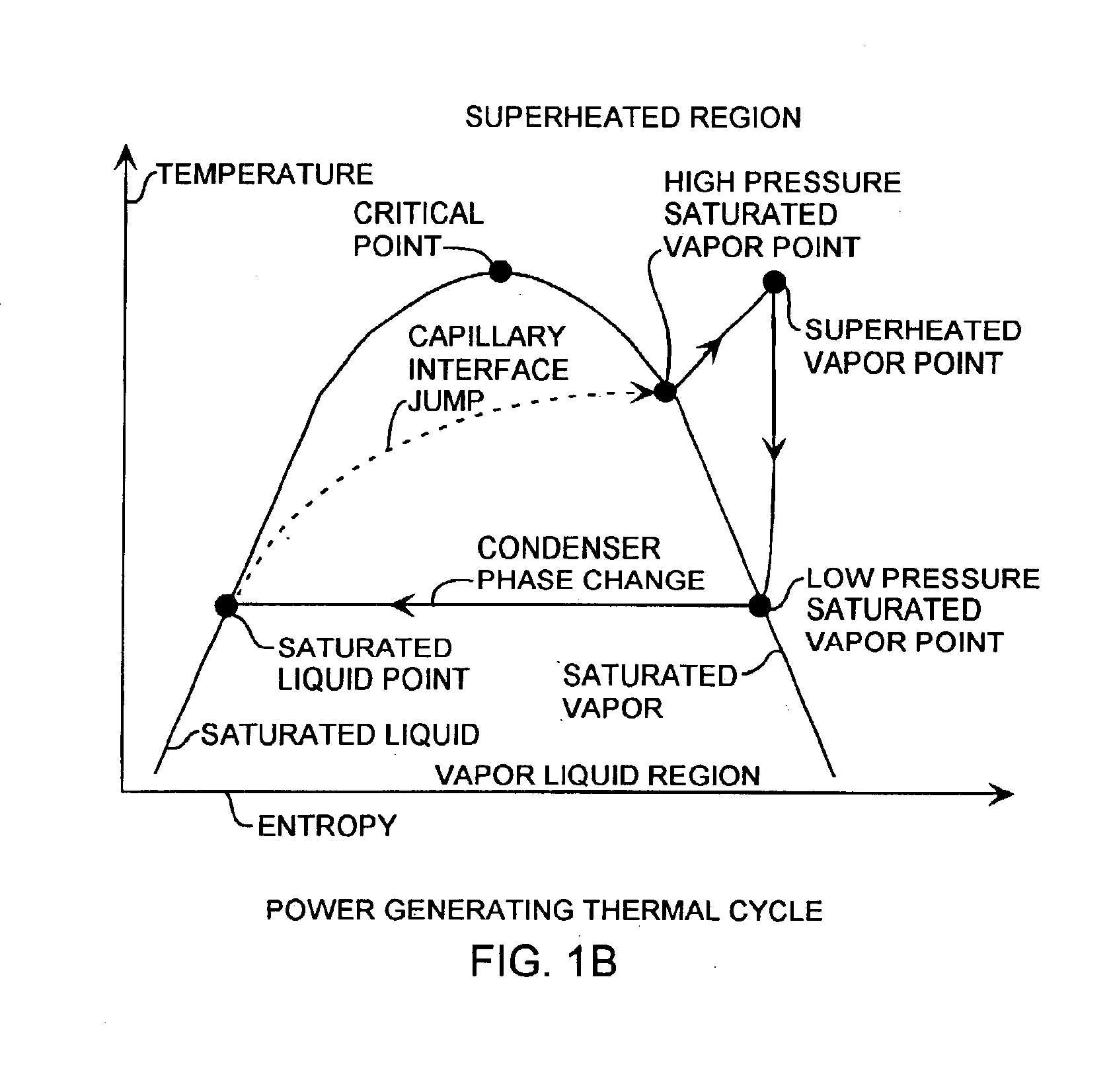Capillary two-phase thermodynamic power conversion cycle system
a two-phase thermodynamic and cycle system technology, applied in the field of two-phase thermodynamic cycle systems, can solve the problems of single rankine power cycle, use of additional power converter, and limited space based dynamic power conversion cycles, etc., and achieve the effect of reducing leakag
- Summary
- Abstract
- Description
- Claims
- Application Information
AI Technical Summary
Benefits of technology
Problems solved by technology
Method used
Image
Examples
Embodiment Construction
An embodiment of the invention is described with reference to the figures using reference designations as shown in the figures. Referring to FIGS. 1A and 1B, a working fluid, such as amonia or water, obtains a liquid phase and a vapor phase in a two-phase power generation system. The flow starts, for example, as a saturated liquid moving along a saturated liquid path 62 from a condenser 16 to the evaporator 28 of a capillary device 10, comprising a capillary wick 24 within a wick container 26. The evaporator 28, may be, for example, the evaporator from a conventional loop heat pipe or a conventional capillary pumped loop. Forced heat 54 into the capillary device 10 evaporator serves to drive the device. This liquid is pushed to the capillary wick 24 under pressure. The capillary wick 24 provides the separation between the high-pressure saturated vapor and the low-pressure saturated liquid. Flow through the capillary wick 24 is achieved because the working fluid wets the capillary wi...
PUM
 Login to View More
Login to View More Abstract
Description
Claims
Application Information
 Login to View More
Login to View More - R&D
- Intellectual Property
- Life Sciences
- Materials
- Tech Scout
- Unparalleled Data Quality
- Higher Quality Content
- 60% Fewer Hallucinations
Browse by: Latest US Patents, China's latest patents, Technical Efficacy Thesaurus, Application Domain, Technology Topic, Popular Technical Reports.
© 2025 PatSnap. All rights reserved.Legal|Privacy policy|Modern Slavery Act Transparency Statement|Sitemap|About US| Contact US: help@patsnap.com



